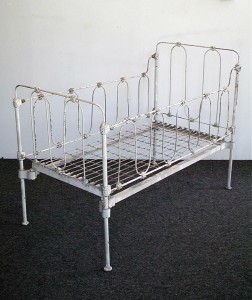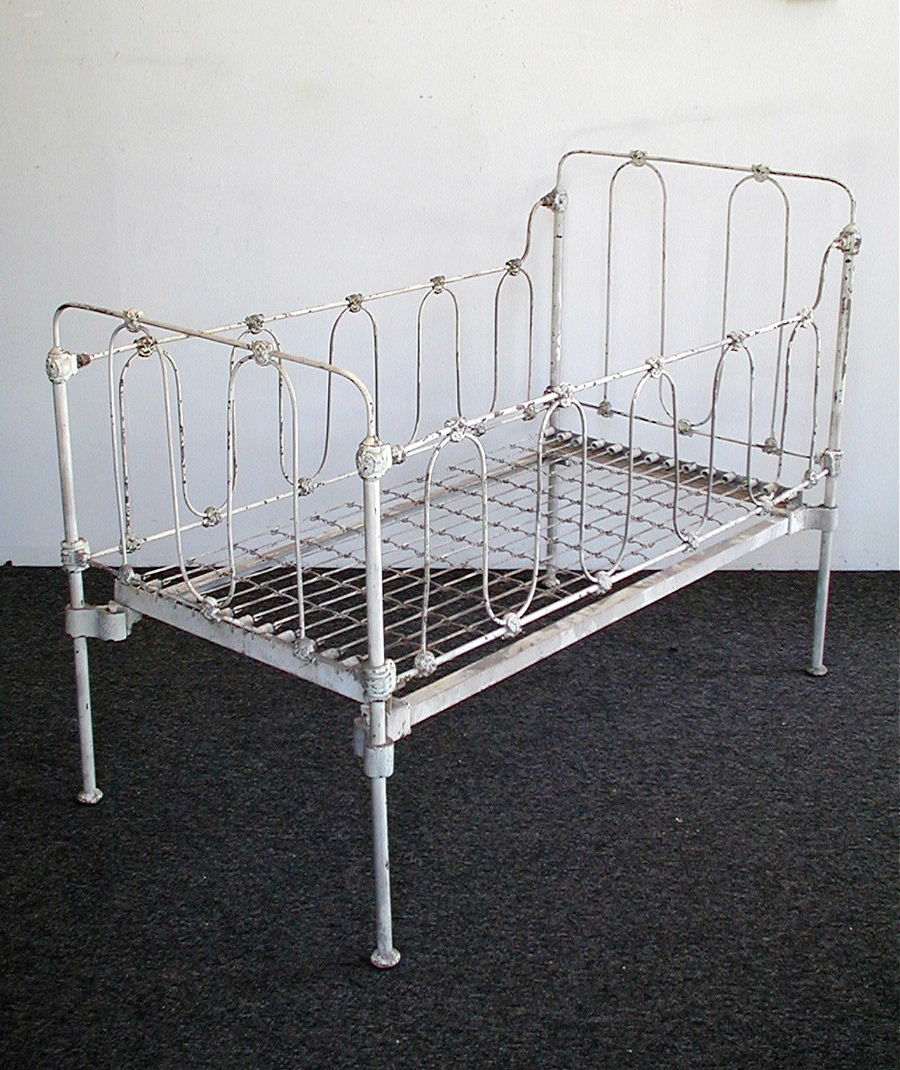Antique iron cribs are the least safe thing you cold ever buy. If your intentions are to actually use them for your new born. The U.S. Consumer Product Safety Commission has instituted new safety standard for cribs. Here are a few of the reasons why.
 No crib can be made or sold with traditional drop side rails. Since gaps can form quite easily between the drop side rails and the mattress, the risk of suffocation increases considerably with these styles of cribs. The malfunction of these rails have been linked to at least 32 infant deaths since 2000.
No crib can be made or sold with traditional drop side rails. Since gaps can form quite easily between the drop side rails and the mattress, the risk of suffocation increases considerably with these styles of cribs. The malfunction of these rails have been linked to at least 32 infant deaths since 2000.- There should be no broken or missing crib slats and all wooden parts should be free of splits, cracks, and other defects. Crib slats should be no more than 2 3/8 inches apart to prevent your baby from slipping through the slats. The easiest way to check the spacing of the crib slats is to attempt to pass a soda pop can between the slats. Properly spaced slats will not allow the soda pop can to pass through the slats.
- There should be no missing, loose, damaged or improperly installed hardware, including screws, bolts, or brackets, on the crib or mattress support.
- Corner posts should not be higher than 1/16″ above the end panels of the crib, including decorative knobs or canopy posts. This prevents your baby’s clothing from becoming tangled on the crib.
- The mattress support hangers should be secured to the crib frame with bolts or closed hooks. If a mattress support hanger becomes unhooked, the mattress support could dislodge creating a space between the mattress and sides of the crib. Your baby could easily slide into this space and become trapped. The mattress should fit in the crib snugly, with no more than two finger widths between the inside edge of the crib and the edge of the mattress . The crib mattress should also be firm to provide adequate support for your baby’s growing body.
- The crib mattress support should always be set so your baby cannot climb out of the crib. Set the crib mattress support at the highest setting for newborns. Use the middle setting when your baby is able to push up on their hands and knees, usually around 4 – 6 months. Use the lowest setting when your baby can stand up in the crib, usually around 8 – 12 months.
- There should be no decorative cutouts in the headboard or foot board of your crib that can trap your baby’s head or body.
The CPSC strongly discourages use of second-hand cribs. Two common hazards found in older cribs include cutout designs on the headboard and foot board or pictures painted in a lead-based paint.
It would be next to impossible to correct all of the above safety violations on most antique iron cribs. Yet occasionally I have come across cribs that have side spokes that are much closer together and don’t have corner posts the the babys clothes can get caught on.
The only thing antique iron cribs should be used for today is display, as a sette , or for a doll collection.
Never for Practical use……………
I hope you’ve found this blog informative . I invite you to revisit my website
to answer any and all questions you might have about antique iron beds.
I also invite you to take a look at our company Face Book page for multiple photo albums on Custom Finishes, Canopy Conversions and a comprehensive “Before & After” King Conversions album.







